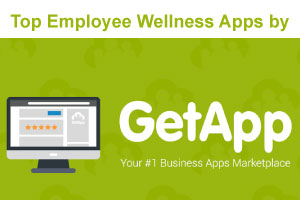Personalizing Wellness: How to Tailor Corporate Wellness Strategies to Meet Employee Needs

As more and more businesses begin to prioritize employees’ health, they’re realizing that workforce wellness directly impacts productivity, job satisfaction, engagement, and retention rates. However, employers are also recognizing that to meet the diverse needs and preferences of their employees, a traditional one-size-fits-all approach will not suffice.
Instead, to cultivate a healthy workforce and truly make a difference, employers must tailor their corporate wellness strategies. In this blog post, we’ll explain how to customize your wellness strategies to resonate with employees from all walks of life so you can position your organization for long-term success.
6 Challenges to Creating Tailored Wellness Strategies
Tailored wellness strategies offer a promising avenue to address employees’ varying needs, but they also come with their own challenges:
1. Workforce Diversity
A 2023 survey indicated that 32% of employees consider it important to work with colleagues from diverse racial and ethnic backgrounds. However, for employers, promoting a culture of inclusivity and openness can be challenging. What may work for one group of employees might not be comfortable for others due to different cultural norms, beliefs, and practices. Overcoming these cultural barriers requires a nuanced approach that involves cultural sensitivity, active listening, and meaningful engagement with employees from different backgrounds.

2. Accessibility and Inclusivity
Accessibility is another aspect to consider when designing wellness programs. Physical, cognitive, and socioeconomic barriers can prevent employees from fully participating in traditional wellness activities. Creating inclusive programs means making sure that everyone, regardless of their abilities or resources, can access and benefit from the initiatives. This might involve offering alternative formats, providing accommodations, or combining with community resources to bridge gaps in accessibility.
3. Maintaining Engagement
Keeping employees engaged and motivated to participate in wellness programs isn’t always an easy task. While initial enthusiasm might be high, sustaining interest over time requires innovative approaches and regular reinforcement. Incorporating gamification elements, fostering a sense of community through peer support networks, and leveraging technology platforms can all help to maintain engagement and drive long-term behavior change.
4. Balancing Personalization With Scale
Personalization is often key to the success of tailored wellness strategies, as it allows organizations to address individual needs and preferences. Nevertheless, scaling personalized programs to reach a large workforce can be difficult. Technology-driven solutions such as AI-powered platforms can help to automate processes, analyze data, and deliver customized recommendations at scale.
5. Employee Privacy and Confidentiality
It’s not uncommon for wellness initiatives to rely on collecting and utilizing personal data, so employers must take extra precautions to respect employee privacy and maintain confidentiality. Building trust and transparency through clear communication and robust data protection measures can help employees feel comfortable participating in these programs. Implementing strict privacy policies, anonymizing data wherever possible, and obtaining explicit consent are some of the ways you can uphold employee privacy rights while still deriving valuable insights from wellness initiatives.
6. Budget Constraints
Budget constraints often pose a significant barrier to the implementation of comprehensive wellness programs. As a result, organizations must find ways to maximize the impact of wellness initiatives with limited resources. This might mean prioritizing high-impact interventions, leveraging cost-effective solutions such as digital platforms, and exploring external funding opportunities or partnerships. By taking a strategic and resourceful approach, you can overcome budget constraints and create sustainable wellness programs that deliver tangible benefits to employees.
How to Craft Programs That Address Individual Needs and Preferences
The trick to creating wellness programs that cater to individual employee needs and preferences is to develop a strategy that strikes the right balance. Use these seven tips:
1. Use Health Risk Assessments
The first step in understanding your employees’ unique health risks and challenges is to conduct health risk assessments. Assessments allow you to gather valuable data on factors such as lifestyle habits, chronic conditions, and stress levels. Once you’ve gathered this information, you can use it to design targeted interventions that address the specific needs of individuals and promote positive behaviors.
2. Align Your Programs With Organizational Goals
It’s important to ensure that your wellness programs are aligned with the overarching goals and values of your organization. Whether it's improving productivity, reducing healthcare costs, or fostering a culture of well-being, aligning your initiatives with organizational objectives increases buy-in from leadership and reinforces the importance of employee wellness as a strategic priority.
3. Provide Flexible Options
In recent years, there has been a substantial uptick in the global workforce opting for remote work arrangements, with the percentage of remote employees climbing from 13% in 2020 to 28% by 2023. Because employees have diverse lifestyles and work arrangements, aim to provide flexible options to accommodate their needs. Offering a mix of onsite and virtual programs, lunchtime workouts, and self-paced challenges enables them to participate in wellness activities that fit seamlessly into their schedules and preferences.

Percentage of employees who work from home all or most of the time worldwide from 2015 to 2023. (Image Source)
4. Utilize Wellness Platforms and Apps
Investing in wellness platforms and apps can empower employees to take control of their health and well-being. With these tools, employees can track their progress, set personalized goals, access resources such as workout videos and healthy recipes, and connect with peers for support and accountability. By leveraging technology, you can create an engaging wellness experience for employees, regardless of their location or schedule.
5. Use Targeted Communication Strategies
Effective communication is essential for promoting awareness and engagement in wellness programs. Tailor your communication strategies to resonate with different segments of your workforce, considering factors such as age, language, and preferred communication channels. Use a mix of email, newsletters, posters, and digital signage to guarantee that your messages reach employees wherever they are.
6. Offer Education and Support
When employees have the knowledge and resources they need, they can make more informed decisions about their health. Consider providing educational workshops, webinars, and resources on topics such as nutrition, exercise, mental health, and stress management. Offering opportunities for skill-building and self-improvement enhances employee well-being and also contributes to a culture of continuous learning and development.
7. Continuously Solicit Feedback and Make Adjustments
Finally, recognize that wellness is an ongoing journey, and feedback is essential for refining and improving your programs over time. Regularly solicit feedback from employees through surveys, focus groups, and one-on-one discussions, and use this input to make data-driven adjustments to your initiatives. Not only will it demonstrate a commitment to listening and responding to the needs of your workforce, but you’ll also develop a culture of trust and collaboration that drives positive outcomes for everyone involved.
Support Your Employees With CoreHealth
Interested in learning more about how to tailor your corporate wellness strategies and programs? CoreHealth makes it easy to create a culture of health and well-being that supports individual employees’ success and organizational excellence.
With our comprehensive wellness platform, you can conduct needs assessments, offer diverse wellness options, and customize wellness plans based on your employees’ goals and challenges.
We offer a wide range of wellness activities and resources, including fitness classes, nutrition workshops, mental health resources, and more — along with tools for self management, such as wellness apps and goal-setting worksheets to empower your employees to take ownership of their health journey.
Additionally, our robust reporting and analytics capabilities can help you track participation rates, engagement levels, and health outcomes, so you can continuously improve and optimize wellness initiatives.
Want to see the CoreHealth platform in action? Speak to one of our technology experts today!
If you found this article interesting, please share it with your social media network.
To learn more, check out these articles:
About The Author
CoreHealth Marketing
CoreHealth Technologies Inc. is a total well-being technology company trusted by global providers to power their health and wellness programs. Our wellness portals help maximize health, engagement, and productivity for 3+ million employees worldwide.



